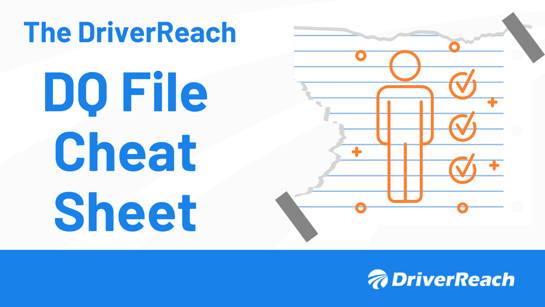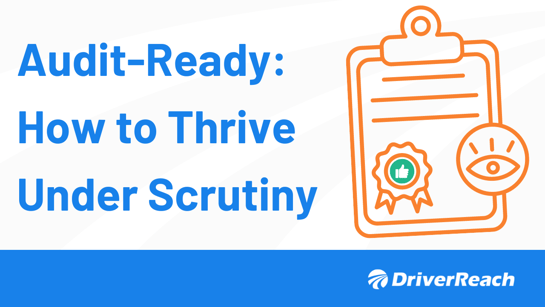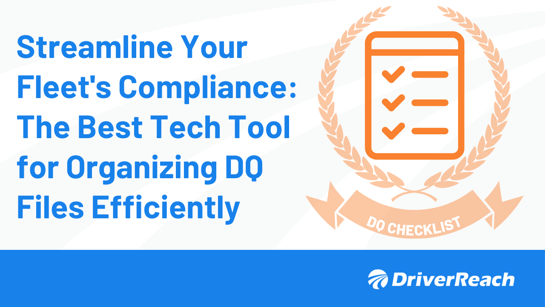Part of the compliance challenge for carriers looking to hire excellent, safety-conscious professional drivers is the required investigation of what FMCSA calls ‘safety performance history’ information from a driver-applicant’s previous employers for the preceding 3 years.
This safety information, required to be investigated by the hiring carrier under Section 391.23 of the federal safety regulations, includes verification of driving employment, past DOT recordable accidents, and any drug and alcohol testing violations under the FMCSA rules for the 3 years preceding the date of the driver’s application for employment.
This same section of the regulations requires the applicant’s previous employers to respond to each request for this information “within 30 days after the request is received.” Even if the previous employers do not have any safety performance history to report, they are still required to respond confirming the “nonexistence of any such data,” and confirming the driver identification information and dates of employment. And, the previous employer(s) can take up to 30 days to do so and still be in compliance.
These ‘investigation’ requirements have existed for many years and, while they are clearly safety-focused, the burden associated with making the request, and the time lag involved in receiving information, often frustrates everyone involved, including the driver-applicant. Simply put, these requirements are a ‘pain point’ in the hiring process.
Fortunately, information technology and improved processes by carriers and background screening companies can take much of the ‘pain’ out of the process. In lieu of the hiring carrier sending emails or faxes or making calls to the previous employers and waiting for a response, third party background screening companies have created a better and faster way.
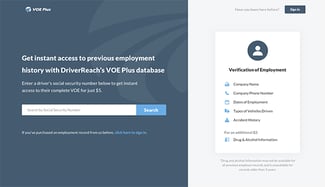 They have created secure databases that retain driver identification and safety performance history information, and in some cases, they have even automated the investigation process. For example, DriverReach’s VOE Plus database securely houses CDL drivers’ previous employment records, allowing recruiters to verify employment history in minutes…not weeks.
They have created secure databases that retain driver identification and safety performance history information, and in some cases, they have even automated the investigation process. For example, DriverReach’s VOE Plus database securely houses CDL drivers’ previous employment records, allowing recruiters to verify employment history in minutes…not weeks.
These databases can be accessed by a hiring carrier and, for many driver-applicants with industry experience, some or all of the required information can be obtained within seconds of making the inquiry. This approach not only speeds the required investigation process for the hiring carrier, it also reduces the burden for previous employers by providing a one-stop shop for information that is often requested by multiple prospective carriers looking to hire the same driver-applicant (i.e., the applicant applied to multiple carriers at the same time). If used, these databases can reduce or eliminate multiple responses for the same driver-applicant by his or her previous employer.
At this point, you might be questioning whether the investigation process of accessing third party databases that store the required driver identification, employment and safety performance history, is compliant with the various requirements in Section 391.23 of the federal safety rules. If so, let’s take a look at some of the primary language in Section 391.23(c)(2): “The investigation may consist of personal interviews, telephone interviews, letters, or any other method for investigating that the carrier deems appropriate…” (italics for emphasis added by the author). This FMCSA regulation is a flexible, performance standard that provides a hiring carrier with the opportunity to use new technology and improved processes to accomplish the safety objective.
There are, of course, numerous other requirements in Section 391.23 that apply to both the hiring carrier and the previous employer(s). For example, the hiring carrier must provide to the previous employer the driver’s consent for the release of certain information, a previous employer(s) must provide specific contact information in case a driver chooses to contact the previous employer for correction or rebuttal, and the previous employer must keep a record of each request made for the information. As long as the third-party screening company’s system, processes and data retention practices allow the hiring carrier and previous employer(s) to meet the compliance and recordkeeping requirements of Section 391.23, this technology friendly, faster approach is acceptable. Due diligence is always important, and it’s no different when carriers are considering better approaches to complying with performance-oriented standards when hiring professional drivers.
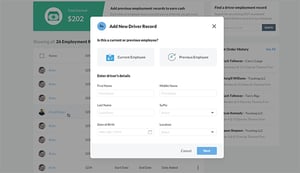
A final note about paying for this type of service. Of course, for a hiring carrier, there is a cost associated with the convenience and speed of obtaining this safety performance history information from a database maintained by a third-party provider. Accessing and obtaining this information, for a fee, from a third party’s secure database can be accomplished in less than a minute for an applicant under serious consideration. On the other hand, requesting and obtaining this information the ‘old fashioned’ way (i.e., emails or phone calls) can often take up to 30 days. The rules allow for either approach, and the rules cannot be used by previous employers to force a hiring carrier to use a third party’s database. It’s a choice…driven by market conditions. With this tougher-than-ever driver market, what choice will you make?
By Dave Osiecki, President of Scopelitis Transportation Consulting. If you have question, contact DriverReach’s regulatory and compliance expert, Dave Osiecki at dosiecki@scopelitisconsulting.com.


